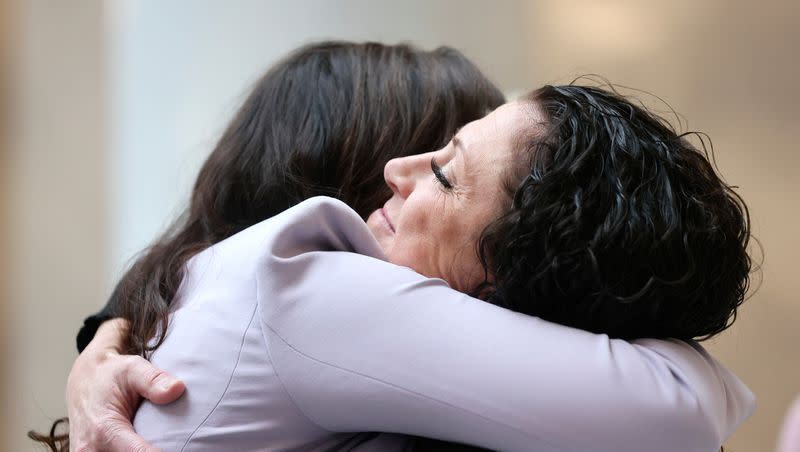October is Domestic Violence Awareness Month — here are the signs and what you can do to help

More than 10 million people each year are victims of domestic abuse in the U.S., according to the National Coalition Against Domestic Violence. For National Domestic Violence Awareness Month, the coalition and similar organizations are raising awareness of the prevalence of abuse and the resources available to combat it.
What is National Domestic Violence Awareness Month?
National Domestic Violence Awareness Month was first observed in October 1989. According to the U.S. Department of Defense, “This national observance was created to raise awareness about how to report domestic abuse and encourages community members to speak up if they suspect abuse.”
Approximately 21% of all violent crime in the United States is characterized as domestic violence, according to the Department of Justice.
What are some signs of an abusive relationship?
Anyone can be an abuser and anyone can be abused, regardless of gender, race, sexual orientation or other factors.
Domestic violence, or intimate partner violence, is “a pattern of behaviors used by one partner to maintain power and control over another partner in an intimate relationship,” according to the National Domestic Violence Hotline. This can include physical violence and emotional abuse.
While every situation is different, the National Domestic Violence Hotline’s website lists a series of behaviors that may signal that you are in an abusive relationship. These include, but are not limited to:
Extreme criticism.
Jealousy, particularly of your friends or of time spent apart.
Controlling your time or who you spend it with, especially friends and family.
Making decisions for you, especially regarding work, school or finances.
Insulting or belittling you, whether alone or in front of others.
Pressuring or forcing you to use substances, such as drugs or alcohol.
Pressuring or forcing you to have sex or anything you’re uncomfortable with.
Intimidating or threatening you, either by words, force or display of weapons.
Destroying your property.
How can you recognize if someone else is in an abusive relationship?
The National Coalition Against Domestic Violence notes that “an abuser may be pleasant and charming between periods of violence and is often seen as a ‘nice person’ to others outside the relationship.”
People who are concerned that someone they know may be in an abusive situation can keep an eye out for the behavior listed above. In addition to those warning signs, there are some indicators that someone may be facing domestic abuse. According to the Rape, Abuse & Incest National Network, these can include:
Withdrawing from regular activities, including spending time with friends and family.
Saying their partner doesn’t want them to spend time with others.
Saying their partner is limiting their contact with friends or family, or signs their partner is answering their phone or texts.
Mentioning any instances of sexual assault or the partner trying to limit contraception or refusing to practice safe sex.
Mentioning their partner pressuring or forcing them to do things they’re uncomfortable with.
Visible signs of physical abuse, such as bruises or unexplained injuries. These can also be covered with clothing or makeup.
What can you do to help someone escape an abusive situation?
There are resources available to those seeking to leave abusive situations or who have left and need help recovering.
The National Domestic Violence Hotline offers 24/7 confidential assistance via call, chat or text. The service is free and is available in English and Spanish. Additionally, the website includes a local resource search to help victims get financial assistance, health services, housing, counseling, legal advocacy and more.
The National Coalition Against Domestic Violence advises those who know someone in an abusive situation to make a safety plan to help them. The website includes several example safety plans and reminds advocates to be there for victims, not to judge them or try to force them into action.
Most states have domestic violence resources and services tailored to serve local communities. Additional organizations serve specific demographics, such as Restoring Ancestral Winds, which serves Indigenous communities.
Whether you are in an abusive situation, healing after leaving one, trying to help a loved one being abused or even if you recognize abusive behavior in your own actions, help and hope are available to you.
Related

